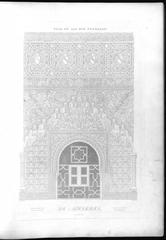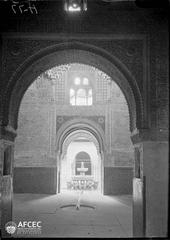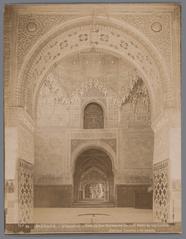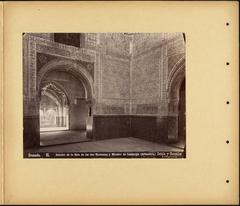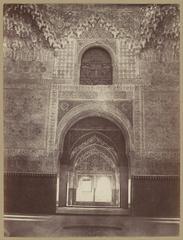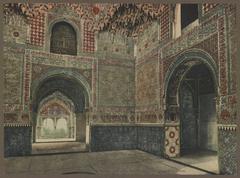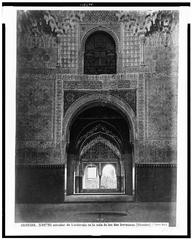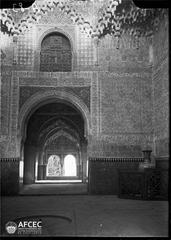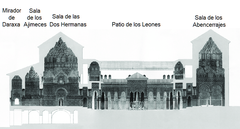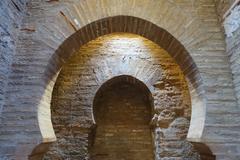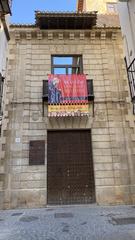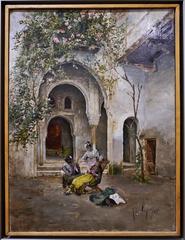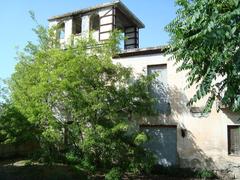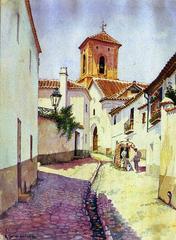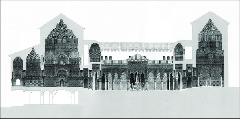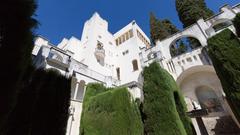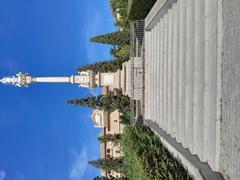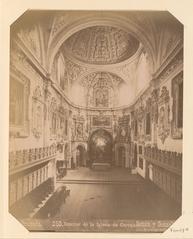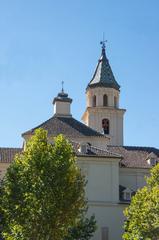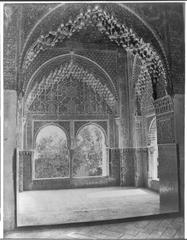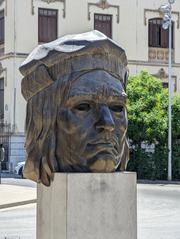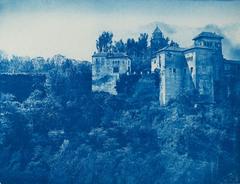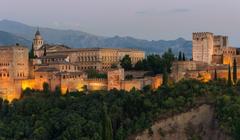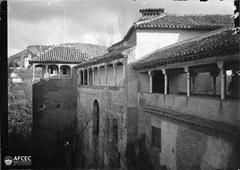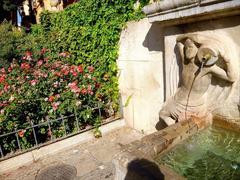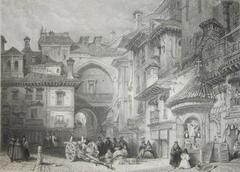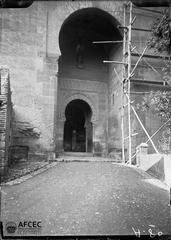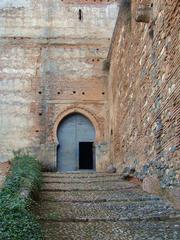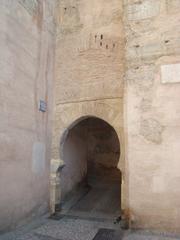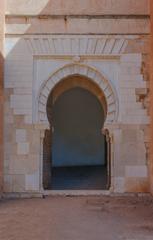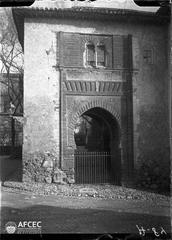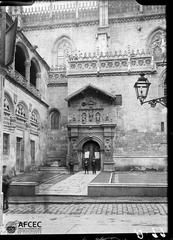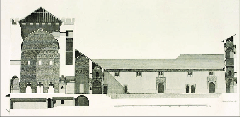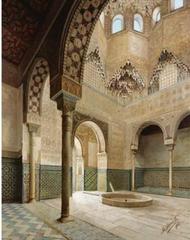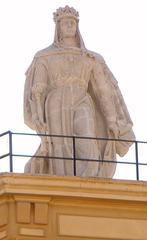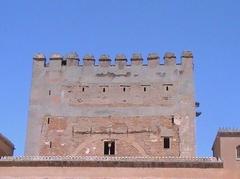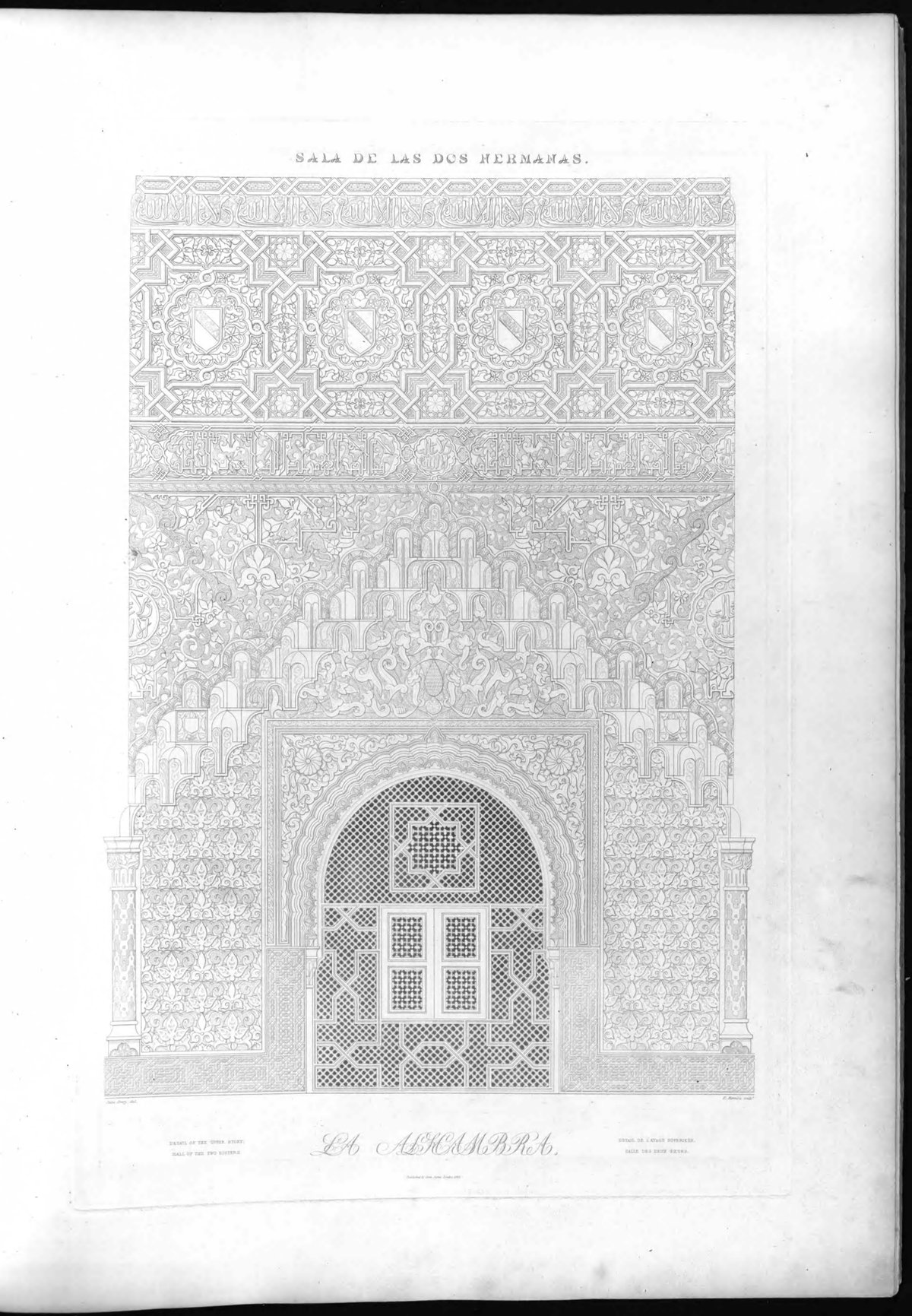
Sala de las Dos Hermanas: Visiting Hours, Tickets, and Complete Guide to Granada’s Nasrid Jewel
Date: 14/06/2025
Introduction
The Sala de las Dos Hermanas (Hall of the Two Sisters) is a crown jewel of the Alhambra’s Nasrid Palaces in Granada, Spain. This extraordinary chamber is celebrated for its mesmerizing muqarnas dome, intricate plasterwork, and evocative poetry inscribed upon its walls. Constructed during the reign of Sultan Muhammad V in the mid-14th century, the hall is a masterpiece of Nasrid art and architecture—a place where history, artistry, and cultural symbolism converge.
A visit to the Sala de las Dos Hermanas offers more than architectural splendor: it is an immersive journey into the final flowering of Al-Andalus, the last Muslim dynasty of the Iberian Peninsula. The chamber’s harmonious design, symbolic water features, and literary inscriptions provide a window into a sophisticated world shaped by power, spirituality, and artistic innovation. This guide offers everything you need to plan your visit, understand the hall’s significance, and make the most of exploring Granada’s historic heart (alhambradegranada.org; alhambra-patronato.es; seordelbiombo.blogspot.com).
Table of Contents
- Introduction
- Origins and Construction
- Architectural Layout and Materials
- The Meaning Behind “Two Sisters”
- Artistic Program and Symbolism
- The Muqarnas Dome
- Water Features and Spatial Integration
- Historical Context and Legacy
- Visitor Information
- Frequently Asked Questions (FAQ)
- Conclusion
- Official Sources and Further Reading
Origins and Construction
The Sala de las Dos Hermanas was built between 1354 and 1358 during the reign of Muhammad V, when the Emirate of Granada reached its artistic and political zenith. Designed as a ceremonial and residential chamber, it served as a courtly audience hall and private quarters for the sultana and her family (alhambradegranada.org; alhambra.info).
Its strategic location within the Nasrid Palaces, adjacent to the Patio de los Leones, connected it to the heart of palace life. The hall’s construction utilized brick and tapial (rammed earth) as structural materials, masked by dazzling plasterwork—a testament to Nasrid ingenuity in creating luxury from modest means (seordelbiombo.blogspot.com).
Architectural Layout and Materials
The room’s square plan (about 8.2 meters per side) is surrounded by alcoves and upper chambers, historically reserved for the sultana and her children. The entrance features a semicircular festooned arch with preserved original wooden doors. The chamber connects to the Mirador de Lindaraja, offering panoramic views of the gardens, and to other palace spaces via discreet passageways (alhambradegranada.org).
Lavish plaster (yeso) decorations, glazed ceramic tiles (azulejos), and marble flooring elevate the hall’s architecture. The flooring, in particular, features two enormous, identical Macael marble slabs, lending the hall its name (Nomads Travel Guide).
The Meaning Behind “Two Sisters”
Contrary to popular legend, the hall’s name does not refer to a historical narrative about siblings. Instead, it derives from the prominent twin marble flagstones embedded in the floor—symbols of harmony, balance, and material luxury (alhambradegranada.org).
Artistic Program and Symbolism
The Sala de las Dos Hermanas exemplifies the “horror vacui” tradition of Nasrid ornamentation: every surface is richly adorned. Repeated geometric patterns, ataurique (vegetal motifs), and friezes of Arabic script evoke a sense of infinite paradise, as described in the Qur’an (seordelbiombo.blogspot.com). The recurring Nasrid motto, “Only God is Victor” (Wa lā ghāliba illā Allāh), features prominently.
Poetic inscriptions, especially those by the celebrated court poet Ibn Zamrak, are integral to the hall’s décor, blending architecture and literature in a unique artistic synthesis (Tillism).
The Muqarnas Dome
The hall’s crowning feature is its awe-inspiring muqarnas dome—a honeycomb vault comprising approximately 5,000 individual plaster cells, arranged in an octagonal star pattern. Small windows admit sunlight, creating a celestial effect that symbolizes the heavens and paradise (alhambradegranada.org; Alhambra Official).
The dome’s interplay of light and shadow, enhanced by reflective tiles and metallic zócalos, represents both the transcendence of divine order and the artistic mastery of Nasrid Granada.
Water Features and Spatial Integration
A central marble fountain, whose water flows through a narrow channel to the adjacent Patio de los Leones, underscores the importance of water as both a practical and symbolic element. In Islamic art, such water features evoke purity, life, and the rivers of paradise (alhambradegranada.org).
The hall’s spatial connections—through balconies and passageways—integrate it with the palace’s private and public life, reflecting the Nasrid emphasis on harmony between architecture and nature.
Historical Context and Legacy
The Sala de las Dos Hermanas was not just a setting for splendor; it was a witness to dynastic drama. Aixa, the mother of the last Nasrid sultan Boabdil, is said to have resided here during the final years of Muslim rule in Spain (Tillism). The chamber stands as a poignant symbol of Granada’s cultural synthesis and the end of an era in 1492.
After the Christian conquest, the hall continued to inspire, influencing Mudéjar art and serving as a touchstone for Granada’s evolving identity (seordelbiombo.blogspot.com).
Visitor Information
Visiting Hours
- April 1 – October 14: 8:30 am – 8:00 pm (day), 10:00 pm – 11:30 pm (evening)
- October 15 – March 31: 8:30 am – 6:00 pm (day), 10:00 pm – 11:30 pm (evening)
- Always check the official Alhambra website for up-to-date opening times (Earth Trekkers).
Tickets and Reservations
- Tickets are nominative and must be reserved well in advance (2–3 months ahead is recommended) due to limited capacity.
- General admission (approx. €19.09 as of 2025) includes the Nasrid Palaces, Alcazaba, and Generalife.
- Entry to the Nasrid Palaces is strictly timed; late arrival may result in denied entry.
- Purchase tickets via the official Alhambra site, or consider reputable platforms such as GetYourGuide (Nomads Travel Guide).
Accessibility
- The Alhambra offers some accessible routes, but the Nasrid Palaces have uneven surfaces and narrow passages.
- Consult the official accessibility guide before your visit.
Guided Tours and Audio Guides
- Guided tours are highly recommended for historical and artistic insight. Book through the official site or platforms like GetYourGuide.
- Audio guides and apps such as Audiala offer multilingual commentary and enhanced experiences.
Travel Tips
- Best time to visit: Early morning or late afternoon for fewer crowds and optimal lighting.
- Photography: Non-flash photography is permitted; tripods are not allowed (Patrimonio Granada).
- Dress comfortably: Wear sturdy shoes; interiors may be cool.
- Facilities: Restrooms are outside the Nasrid Palaces. No re-entry after exit.
- Visitor etiquette: Do not touch walls or decorations; keep noise low to preserve the tranquil atmosphere.
Nearby Attractions
- Within Alhambra: Patio de los Leones, Sala de los Abencerrajes, Mirador de Lindaraja, El Partal Gardens, Alcazaba fortress, and Generalife gardens.
- In Granada: The Cathedral, Albaicín district, and the city’s historic center.
Frequently Asked Questions (FAQ)
Q: How do I buy tickets for the Sala de las Dos Hermanas?
A: Tickets are included in Alhambra general admission and must be reserved online in advance via the official website.
Q: What are the best visiting hours?
A: Early morning or late afternoon for a quieter experience and the best natural light.
Q: Is the Sala de las Dos Hermanas accessible for visitors with reduced mobility?
A: Access is limited due to historic architecture; check the accessibility guide.
Q: Are guided tours available?
A: Yes, through the official site and reputable providers such as GetYourGuide.
Q: Can I take photographs inside?
A: Yes, non-flash photography is permitted, but tripods are not allowed.
Conclusion
The Sala de las Dos Hermanas is a living testament to Granada’s artistic, cultural, and historical legacy. Its iconic twin marble slabs, dazzling muqarnas dome, poetic inscriptions, and symbolic water features make it a highlight of any Alhambra visit. By planning ahead—booking tickets early, joining a guided tour, and exploring nearby sites—you will unlock the full depth of this Nasrid masterpiece.
Experience the magic of the Sala de las Dos Hermanas and the grandeur of the Alhambra on your next trip to Granada. For real-time updates, guided tours, and exclusive insights, download the Audiala app and follow us on social media.
Official Sources and Further Reading
- Alhambra Official Website: Sala de las Dos Hermanas
- Alhambra Granada Official Site: Hall of the Two Sisters
- Señor del Biombo Blog: El Salón de las Dos Hermanas
- Nomads Travel Guide: Visiting the Sala de las Dos Hermanas
- Earth Trekkers: Planning Your Visit
- Tillism: The Poetry of Sala de Dos Hermanas
- Patrimonio Granada: Virtual Tour and Photography Guidelines
- Lonely Planet: Sala de las Dos Hermanas
